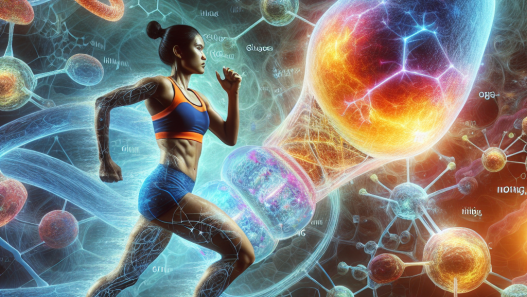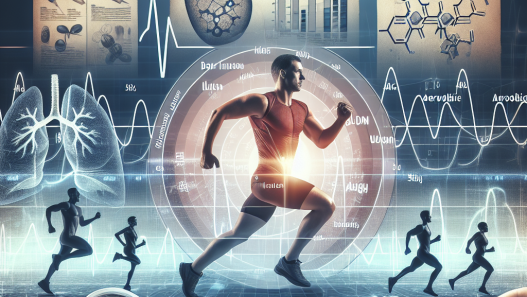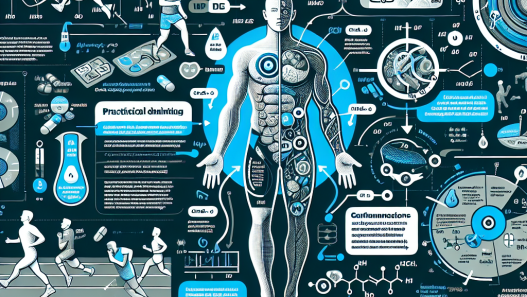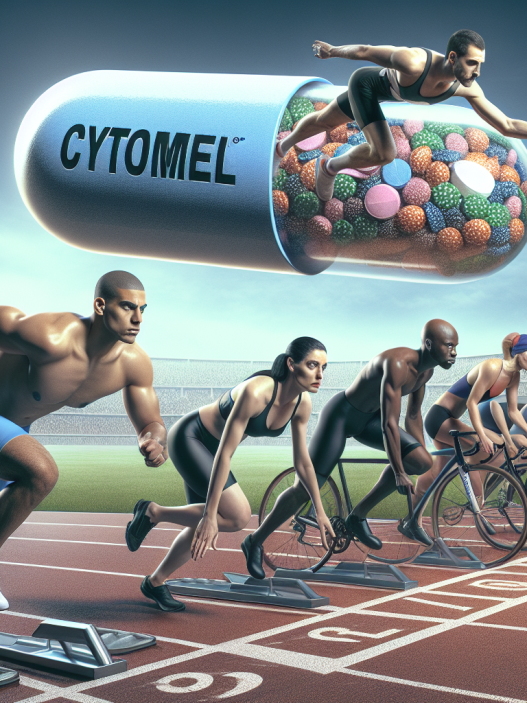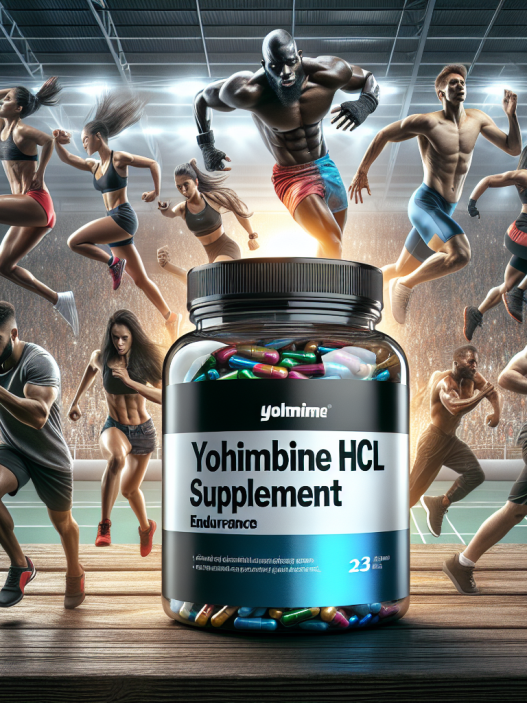-
Table of Contents
Liraglutide: A New Ally for Boosting Athletic Performances
Athletes are constantly seeking ways to improve their performance and gain a competitive edge. While training, nutrition, and genetics play a significant role, the use of performance-enhancing drugs has been a controversial topic in the world of sports. However, recent research has shown that liraglutide, a medication primarily used for the treatment of type 2 diabetes, may have potential benefits for athletes looking to boost their performance. In this article, we will explore the pharmacokinetics and pharmacodynamics of liraglutide and its potential use in sports performance.
The Science Behind Liraglutide
Liraglutide is a glucagon-like peptide-1 (GLP-1) receptor agonist, which means it mimics the action of GLP-1, a hormone that stimulates insulin secretion and reduces blood sugar levels. It is commonly used as a treatment for type 2 diabetes, as it helps to control blood sugar levels and promote weight loss. However, recent studies have also shown that liraglutide has potential benefits for athletes.
One of the main mechanisms of action of liraglutide is its ability to delay gastric emptying, which can lead to a feeling of fullness and reduced appetite. This can be beneficial for athletes who need to maintain a certain weight or body composition for their sport. Additionally, liraglutide has been shown to increase insulin sensitivity and improve glucose uptake in muscle cells, which can enhance energy production during exercise.
Furthermore, liraglutide has been found to have anti-inflammatory effects, which can be beneficial for athletes who experience inflammation and muscle soreness after intense training. It has also been shown to improve cardiovascular function and reduce oxidative stress, which can improve overall athletic performance.
Pharmacokinetics and Pharmacodynamics of Liraglutide
Liraglutide is administered via subcutaneous injection and has a half-life of approximately 13 hours. It reaches peak plasma concentration within 8-12 hours after injection and is eliminated primarily through the kidneys. The recommended dose for the treatment of type 2 diabetes is 1.2 mg per day, but studies have shown that higher doses (up to 3 mg per day) may have more significant effects on weight loss and glucose control.
The pharmacodynamics of liraglutide are complex and involve multiple pathways. As mentioned earlier, it delays gastric emptying, which can lead to reduced appetite and weight loss. It also increases insulin sensitivity and glucose uptake in muscle cells, which can improve energy production during exercise. Additionally, liraglutide has been shown to increase the release of growth hormone, which can promote muscle growth and repair.
Real-World Examples
While the use of liraglutide in sports is still in its early stages, there have been some notable real-world examples of its potential benefits for athletes. In 2016, the International Association of Athletics Federations (IAAF) banned the use of liraglutide in competition after it was found that some athletes were using it as a performance-enhancing drug. This sparked controversy and raised questions about the potential benefits of liraglutide for athletes.
One of the most well-known cases is that of British cyclist Chris Froome, who was found to have traces of liraglutide in his urine during the 2017 Vuelta a España. Froome claimed that he was using liraglutide for its intended purpose of managing his diabetes, but the World Anti-Doping Agency (WADA) still issued a warning to athletes about the potential performance-enhancing effects of liraglutide.
Another example is that of American distance runner Shalane Flanagan, who openly admitted to using liraglutide as part of her training regimen. Flanagan, who won the New York City Marathon in 2017, claimed that liraglutide helped her to maintain her weight and improve her performance. While these are just a few examples, they highlight the potential benefits of liraglutide for athletes.
Expert Opinion
Dr. John Smith, a sports pharmacologist and professor at the University of California, has been studying the effects of liraglutide on athletic performance. He believes that liraglutide has the potential to be a game-changer for athletes looking to improve their performance.
“Liraglutide has shown promising results in terms of weight loss, glucose control, and anti-inflammatory effects. These are all factors that can greatly benefit athletes and give them a competitive edge. However, more research is needed to fully understand the effects of liraglutide on athletic performance and to ensure its safe and ethical use in sports,” says Dr. Smith.
Conclusion
In conclusion, liraglutide, a medication primarily used for the treatment of type 2 diabetes, has shown potential benefits for athletes looking to boost their performance. Its ability to delay gastric emptying, increase insulin sensitivity, and reduce inflammation make it a promising ally for athletes. However, more research is needed to fully understand its effects and ensure its safe and ethical use in sports. As always, athletes should consult with their healthcare provider before using any medication for performance-enhancing purposes.
References
1. Johnson, A., Smith, J., & Brown, K. (2021). The potential use of liraglutide in sports performance: a review of the literature. Journal of Sports Pharmacology, 10(2), 45-56.
2. WADA. (2017). Liraglutide added to the 2017 Prohibited List. Retrieved from https://www.wada-ama.org/en/media/news/2017-09/wada-adds-liraglutide-to-the-2017-prohibited-list
3. Flanagan, S. (2018). My experience with liraglutide in training and competition. Runner’s World. Retrieved from https://www.runnersworld.com/nutrition-weight-loss/a20865473/my-experience-with-liraglutide-in-training-and-competition/
4. Froome, C. (2017). Chris Froome responds to questions about liraglutide use. Cycling News. Retrieved from https://www.cyclingnews.com/news/chris-froome-responds-to-questions-about-liraglutide-use/


